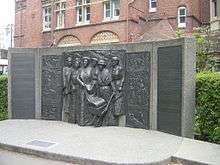Timeline of women's suffrage

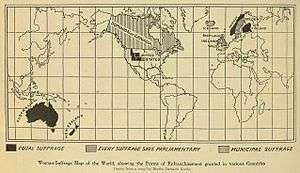

Women's suffrage – the right of women to vote – has been achieved at various times in countries throughout the world. In many nations, women's suffrage was granted before universal suffrage, so women and men from certain classes or races were still unable to vote. Some countries granted it to both sexes at the same time.
This timeline lists years when women's suffrage was enacted. Some countries are listed more than once as the right was extended to more women according to age, land ownership, etc. In many cases, the first voting took place in a subsequent year.
Though it did not achieve nationhood until 1907, the colony of New Zealand was the first self-governing country in the world in which all women had the right to vote in, but not stand for, parliamentary elections in 1893, followed closely by the colony of South Australia in 1894 (which, unlike New Zealand, also allowed women to stand for Parliament).[1] In Sweden, conditional women's suffrage was granted during the age of liberty between 1718 and 1772.[2]
In 1906, the autonomous Grand Principality of Finland, which became the republic of Finland, was the first country in the world to implement truly universal full suffrage, i.e. both active and passive suffrage, by being the first country in the world to give women full political rights, i.e. both the right to vote and to run for office. It was the second country in the world and the first in Europe to give women the right to vote.[3][4] The world's first female members of parliament were elected in Finland the following year.
In Europe, the last jurisdiction to grant women the right to vote was the Swiss canton of Appenzell Innerrhoden, in 1991. Women in Switzerland obtained the right to vote at federal level in 1971,[5] and at local cantonal level between 1959 and 1991,[6][7] see Women's suffrage in Switzerland.
In Saudi Arabia women were first allowed to vote in December 2015 in the municipal elections.[8]
For other women's rights, see Timeline of women's legal rights (other than voting).
18th century
1700s
1718
-
 Sweden: Female taxpaying members of city guilds are allowed to vote in local city elections (rescinded in 1758) and national elections (rescinded in 1772): from 1734, female taxpaying property owners of legal majority are allowed to vote in local country side elections (never rescinded).[2]
Sweden: Female taxpaying members of city guilds are allowed to vote in local city elections (rescinded in 1758) and national elections (rescinded in 1772): from 1734, female taxpaying property owners of legal majority are allowed to vote in local country side elections (never rescinded).[2]
1750s
1755
1756
- U.S. (Still under British crown up until 1776) town of Uxbridge, Massachusetts: One woman, Lydia Taft, is allowed to vote in the town meeting[10]
1770s
1776
-
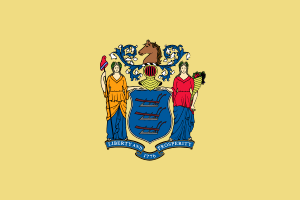 New Jersey (U.S. state) (rescinded in 1807)
New Jersey (U.S. state) (rescinded in 1807)
19th century

1838
1850s
- 1853 Velez Province in what was then the New Granada Republic (Colombia) grants universal suffrage to men and women. The Supreme Court annulled the provision for women.[12]
1856
1860s
1861
- Australian colony of South Australia: limited to property-owning white women for local elections; universal franchise achieved in 1894.
1862
-
 Sweden: limited to local elections with votes graded after taxation; universal franchise achieved in 1919, which went into effect at the 1921 elections.[13]
Sweden: limited to local elections with votes graded after taxation; universal franchise achieved in 1919, which went into effect at the 1921 elections.[13]
1863
-
 The Grand Duchy of Finland (
The Grand Duchy of Finland ( Russian Empire): limited to taxpaying women in the countryside for municipal elections; and in 1872, extended to the cities.[13]
Russian Empire): limited to taxpaying women in the countryside for municipal elections; and in 1872, extended to the cities.[13]
1864
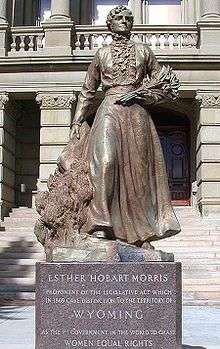
- Australian colony of Victoria: women were unintentionally enfranchised by the Electoral Act (1863), and proceeded to vote in the following year's elections. The Act was amended in 1865 to correct the error.[14]
-
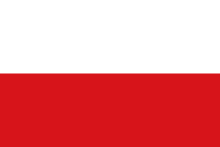 Kingdom of Bohemia: limited to taxpaying women and women in "learned professions" who were allowed to vote by proxy and made eligible for election to the legislative body in 1864.[13]
Kingdom of Bohemia: limited to taxpaying women and women in "learned professions" who were allowed to vote by proxy and made eligible for election to the legislative body in 1864.[13]
1869
 United Kingdom of Great Britain and Ireland: limited to single women ratepayers for local elections under the Municipal Franchise Act.[15][16][17][18] (Partial female suffrage in national elections in 1918; universal franchise in 1928.)
United Kingdom of Great Britain and Ireland: limited to single women ratepayers for local elections under the Municipal Franchise Act.[15][16][17][18] (Partial female suffrage in national elections in 1918; universal franchise in 1928.)- United States-incorporated Territory of Wyoming: full suffrage for women.[19]
1870s
1870
- United States-incorporated Utah Territory: repealed by the Edmunds-Tucker Act in 1887.
- May 10, 1872, New York City: Equal Rights Party nominates Victoria C. Woodhull as their candidate for US-President.
1880s
1881
-
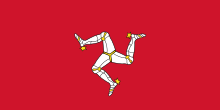 Isle of Man (British Crown dependency) (limited at first to women “freeholders” and then, a few years’ later, extended to include women “householders”).[20]
Isle of Man (British Crown dependency) (limited at first to women “freeholders” and then, a few years’ later, extended to include women “householders”).[20]
1884
-
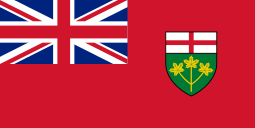 Ontario (Canadian province) (limited to widows and spinsters to vote in municipal elections) (later extended to other provinces).[21]
Ontario (Canadian province) (limited to widows and spinsters to vote in municipal elections) (later extended to other provinces).[21]
1888
- United States- Proposed Constitutional Amendment to extend suffrage and the right to hold office to women (limited to spinsters and widows who owned property).[22]
1889
- The municipality of
 Franceville in the New Hebrides (universal suffrage within its short existence.[23] Loses self-rule within months)
Franceville in the New Hebrides (universal suffrage within its short existence.[23] Loses self-rule within months)
1890s
1893
-
 New Zealand (first self-governing colony in the world in which all women are given the right to vote in parliamentary elections. Women were barred from standing for election until 1919).[24][25]
New Zealand (first self-governing colony in the world in which all women are given the right to vote in parliamentary elections. Women were barred from standing for election until 1919).[24][25] -
 Cook Islands (British protectorate) universal suffrage.[26]
Cook Islands (British protectorate) universal suffrage.[26] -
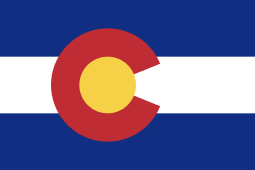 Colorado (U.S. state) (first state in the union to enfranchise women by popular vote)[27]
Colorado (U.S. state) (first state in the union to enfranchise women by popular vote)[27]
1894
- Australian colony of South Australia: universal suffrage, extending the franchise to all women (n.b. all property-owners, including property-owning women, could vote in local elections from 1861), the first colony in Australia to do so. In 1895, South Australian women became the first in the world to be allowed to stand for election.[28][29][30]
 United Kingdom of Great Britain and Ireland: Local Government Act confirms single women’s right to vote in local elections and extends this franchise to some married women.[16][18] By 1900, over 1 million women were registered for local government elections in England.[15]
United Kingdom of Great Britain and Ireland: Local Government Act confirms single women’s right to vote in local elections and extends this franchise to some married women.[16][18] By 1900, over 1 million women were registered for local government elections in England.[15]
1896
-
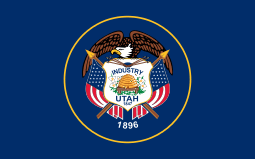 Utah (U.S. state) (reestablishes women's suffrage upon gaining statehood).[31]
Utah (U.S. state) (reestablishes women's suffrage upon gaining statehood).[31] -
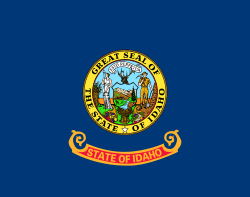 Idaho (U.S. state)
Idaho (U.S. state)
1899
- Australian colony of Western Australia
20th century
1900s
1901
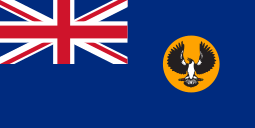 South Australia (Australian state) (were allowed to vote in Australia's first federal election)
South Australia (Australian state) (were allowed to vote in Australia's first federal election)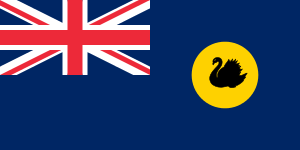 Western Australia (Australian state) (were allowed to vote in Australia's first federal election)
Western Australia (Australian state) (were allowed to vote in Australia's first federal election)
1902
 Australia (The Australian Constitution gives the federal franchise to all persons allowed to vote for the lower house in each state unless the Commonwealth Parliament stipulates otherwise. South Australian and Western Australian women had been able vote in the first federal election in 1901. During the first Parliament, the Commonwealth passes legislation extending federal franchise to non-Aboriginal women in all states. Aboriginal women have the vote in South Australia in 1901. The Commonwealth Franchise Act 1902 withdraws any such Aboriginal voting rights for federal elections, providing that, "No aboriginal native of Australia ... shall be entitled to have his name placed on an Electoral Roll unless so entitled under section forty-one of the Constitution)[32]
Australia (The Australian Constitution gives the federal franchise to all persons allowed to vote for the lower house in each state unless the Commonwealth Parliament stipulates otherwise. South Australian and Western Australian women had been able vote in the first federal election in 1901. During the first Parliament, the Commonwealth passes legislation extending federal franchise to non-Aboriginal women in all states. Aboriginal women have the vote in South Australia in 1901. The Commonwealth Franchise Act 1902 withdraws any such Aboriginal voting rights for federal elections, providing that, "No aboriginal native of Australia ... shall be entitled to have his name placed on an Electoral Roll unless so entitled under section forty-one of the Constitution)[32] 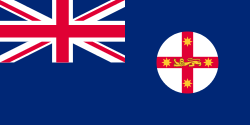 New South Wales (Australian state) (White women only)
New South Wales (Australian state) (White women only)
1903
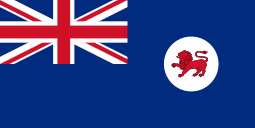 Tasmania (Australian state) (limited to White women only)
Tasmania (Australian state) (limited to White women only) Australia (The first independent country to hold national elections where women were given the vote nationwide, was Australia in that country's second federal election)
Australia (The first independent country to hold national elections where women were given the vote nationwide, was Australia in that country's second federal election)
1905
1905
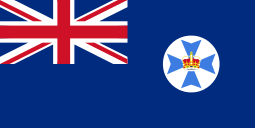 Queensland (Australian state) (limited to non-indigenous women)
Queensland (Australian state) (limited to non-indigenous women)
1906

 Grand Duchy of Finland (
Grand Duchy of Finland ( Russian Empire) (first in the world to give women full political rights, i.e. both the right to vote and to run for office, first in Europe to give women the right to vote).[3][4] The world's first female members of parliament were elected in Finland the following year.
Russian Empire) (first in the world to give women full political rights, i.e. both the right to vote and to run for office, first in Europe to give women the right to vote).[3][4] The world's first female members of parliament were elected in Finland the following year.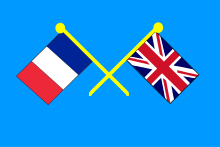 New Hebrides: Perhaps inspired by the Franceville experiment, the Anglo-French Condominium of the New Hebrides grants women the right to vote in municipal elections and to serve on elected municipal councils. (Limited to British, French, and other colonists, and excluding indigenous women.)[33]
New Hebrides: Perhaps inspired by the Franceville experiment, the Anglo-French Condominium of the New Hebrides grants women the right to vote in municipal elections and to serve on elected municipal councils. (Limited to British, French, and other colonists, and excluding indigenous women.)[33]
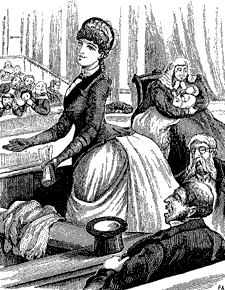
1908
 Denmark (limited to local elections)
Denmark (limited to local elections).svg.png) Victoria (Australian state) (limited to White women only)
Victoria (Australian state) (limited to White women only)
1910s
1910
1911
-
 California (U.S. state)
California (U.S. state) -
 Argentina (a doctor, Julieta Lanteri, sued and won the right to vote)
Argentina (a doctor, Julieta Lanteri, sued and won the right to vote)
1912
1913
1914
1915
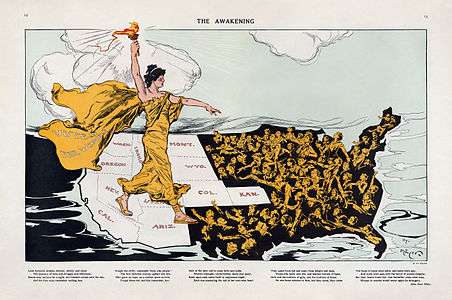
1916
1917
-
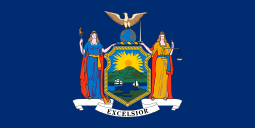 New York (U.S. State)
New York (U.S. State) -
 Azerbaijan Democratic Republic
Azerbaijan Democratic Republic -
 Armenia
Armenia -
.svg.png) Belarusian People's Republic
Belarusian People's Republic -
 Estonia
Estonia -
 Latvia (as an independent country)
Latvia (as an independent country) -
 Lithuania
Lithuania -
 British Columbia (Canadian province)
British Columbia (Canadian province) -
 Ontario (Canadian province)
Ontario (Canadian province) -
 Canada (limited to war widows, women serving overseas, and women with family serving overseas)
Canada (limited to war widows, women serving overseas, and women with family serving overseas) -
 Russian Republic
Russian Republic -
 Ukrainian People's Republic
Ukrainian People's Republic -
 Uruguay (per Constitution)
Uruguay (per Constitution) -
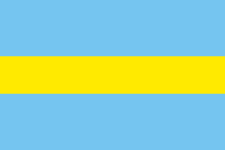 Crimean People's Republic[34]
Crimean People's Republic[34]
1918
-
 Michigan (U.S. state)
Michigan (U.S. state) -
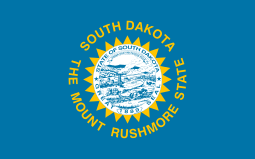 South Dakota (U.S. state)
South Dakota (U.S. state) -
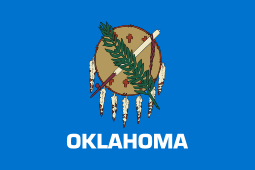 Oklahoma (U.S. state)
Oklahoma (U.S. state) -
 Austria
Austria -
 Azerbaijan
Azerbaijan -
 Canada (limited to women over 21, and "not alien-born", and meeting provincially-determined property qualifications)
Canada (limited to women over 21, and "not alien-born", and meeting provincially-determined property qualifications) -
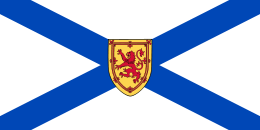 Nova Scotia (Canadian province)
Nova Scotia (Canadian province) -
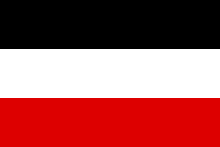 Germany
Germany -
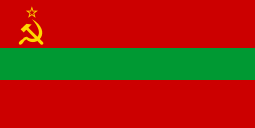 Moldavian SSR (Soviet Union)
Moldavian SSR (Soviet Union) -
 Second Polish Republic
Second Polish Republic -
 Russian SFSR [35] (Soviet Union)
Russian SFSR [35] (Soviet Union)  Kyrgyz SSR (Soviet Union)
Kyrgyz SSR (Soviet Union)-
 United Kingdom of Great Britain and Ireland (limited to women above the age of 30, compared to 21 for men and 19 for those who had fought in World War One. Various property qualifications remained). (See Representation of the People Act 1918)
United Kingdom of Great Britain and Ireland (limited to women above the age of 30, compared to 21 for men and 19 for those who had fought in World War One. Various property qualifications remained). (See Representation of the People Act 1918)
1919
-
.svg.png) Belgium (limited to voting at municipal level)
Belgium (limited to voting at municipal level) -
 Georgia
Georgia -
 Hungary (full suffrage granted in 1945)
Hungary (full suffrage granted in 1945) -
 Luxembourg
Luxembourg -
 Netherlands (right to stand in election protected in 1917)
Netherlands (right to stand in election protected in 1917) -
 New Zealand (women have the right to stand for election into parliament)
New Zealand (women have the right to stand for election into parliament) -
 New Brunswick (Canadian province) (limited to voting. Women's right to stand for office protected in 1934)
New Brunswick (Canadian province) (limited to voting. Women's right to stand for office protected in 1934) -
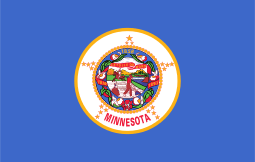 Minnesota (U.S. state)
Minnesota (U.S. state) -
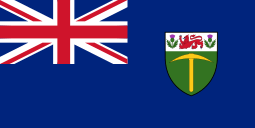 Southern Rhodesia (British Crown Colony) (women now allowed to vote and stand for election into parliament)
Southern Rhodesia (British Crown Colony) (women now allowed to vote and stand for election into parliament)
1920s
1920
 Albania
Albania Czechoslovakia
Czechoslovakia United States (all remaining states by amendment to federal Constitution)
United States (all remaining states by amendment to federal Constitution)
1921
1922
 Irish Free State (equal suffrage granted upon independence from UK. Partial suffrage granted as part of UK in 1869 and 1918)
Irish Free State (equal suffrage granted upon independence from UK. Partial suffrage granted as part of UK in 1869 and 1918)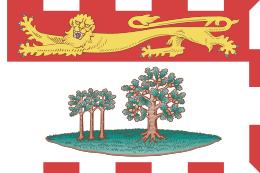 Prince Edward Island (Canadian province)
Prince Edward Island (Canadian province) Yucatán (Mexican state) (limited to regional and congressional elections)
Yucatán (Mexican state) (limited to regional and congressional elections)
1924
 Ecuador (a doctor, Matilde Hidalgo de Prócel, sues and wins the right to vote)
Ecuador (a doctor, Matilde Hidalgo de Prócel, sues and wins the right to vote) Spain (limited to single women and widows in local elections. First women mayors)
Spain (limited to single women and widows in local elections. First women mayors) Mongolia (no electoral system in place prior to this year)
Mongolia (no electoral system in place prior to this year) Saint Lucia
Saint Lucia 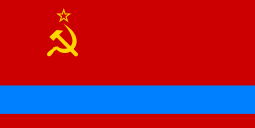 Kazakh SSR (Soviet Union)
Kazakh SSR (Soviet Union)  Tajik SSR (Soviet Union)
Tajik SSR (Soviet Union)
1925
 Italy (limited to local elections)
Italy (limited to local elections) 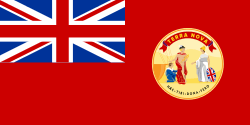 Dominion of Newfoundland (limited to women 25 and older; men can vote at age 21)
Dominion of Newfoundland (limited to women 25 and older; men can vote at age 21)
1927
 Turkmen SSR (Soviet Union)
Turkmen SSR (Soviet Union) Uruguay (women's suffrage is broadcast for the first time in 1927, in the plebiscite of Cerro Chato)
Uruguay (women's suffrage is broadcast for the first time in 1927, in the plebiscite of Cerro Chato)
1928
 United Kingdom (franchise made equal to that for men by the Representation of the People Act 1928)
United Kingdom (franchise made equal to that for men by the Representation of the People Act 1928)
1929
 Romania (limited to local elections only, with restrictions)[37]
Romania (limited to local elections only, with restrictions)[37]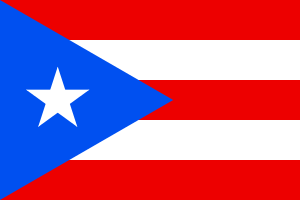 Puerto Rico (women given the right to vote)
Puerto Rico (women given the right to vote) Ecuador (the right of women to vote is written into the Constitution)
Ecuador (the right of women to vote is written into the Constitution)
1930s
1930
.svg.png) South Africa (Women's Enfranchisement Act, 1930: limited to white women on the same basis as white men.
South Africa (Women's Enfranchisement Act, 1930: limited to white women on the same basis as white men. Turkey (limited to municipal elections).[38]
Turkey (limited to municipal elections).[38]
1931
.svg.png) Ceylon
Ceylon Chile (limited to municipal level for female owners of real estate under Legislative Decree No. 320)
Chile (limited to municipal level for female owners of real estate under Legislative Decree No. 320) Portugal (with restrictions following level of education)
Portugal (with restrictions following level of education) Spain (universal suffrage)
Spain (universal suffrage)
1932
1934
 Chile (limited to municipal level under Law No. 5,357)
Chile (limited to municipal level under Law No. 5,357) Cuba
Cuba Portugal (suffrage is expanded)
Portugal (suffrage is expanded) Tabasco (Mexican state) (limited to regional and congress elections only)
Tabasco (Mexican state) (limited to regional and congress elections only) Turkey (parliamentary elections).[39]
Turkey (parliamentary elections).[39]
1935
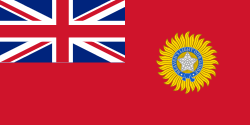 British Raj
British Raj  British Burma (women are granted the right to vote)[25]
British Burma (women are granted the right to vote)[25]
1937
 Dutch East Indies (for European women only)
Dutch East Indies (for European women only).svg.png) Philippines[25]
Philippines[25]
1938
 Bolivia
Bolivia Bulgaria (limited to mothers only)
Bulgaria (limited to mothers only)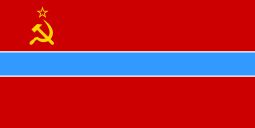 Uzbek SSR (Soviet Union)
Uzbek SSR (Soviet Union)
1939
 El Salvador (with restrictions requiring literacy and a higher age)[40]
El Salvador (with restrictions requiring literacy and a higher age)[40] Romania (women are granted suffrage on equal terms with men with restrictions on both men and women; in practice the restrictions affected women more than men)[41][42]
Romania (women are granted suffrage on equal terms with men with restrictions on both men and women; in practice the restrictions affected women more than men)[41][42]
1940s
1940
1941
-
 Dutch East Indies (limited to European women only)
Dutch East Indies (limited to European women only) -
 Panama (with restrictions)
Panama (with restrictions)
1942
1944
1945
-
 France
France -
 Dutch East Indies
Dutch East Indies -
 Guatemala (Literate only)[44]
Guatemala (Literate only)[44]  Italy[45]
Italy[45] Japan
Japan Senegal
Senegal French Togoland
French Togoland Yugoslavia
Yugoslavia
1946
 Cameroon
Cameroon French Somaliland
French Somaliland Kenya
Kenya North Korea[46]
North Korea[46]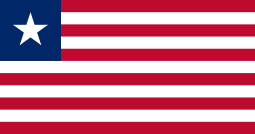 Liberia (Americo women only; indigenous men and women were not enfranchised until 1951)
Liberia (Americo women only; indigenous men and women were not enfranchised until 1951)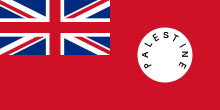 Mandatory Palestine
Mandatory Palestine  Portugal (expands suffrage)
Portugal (expands suffrage) Romania[41]
Romania[41] Venezuela
Venezuela Vietnam
Vietnam
1947
 Argentina[47]
Argentina[47] Republic of China (includes Taiwan: with restrictions)
Republic of China (includes Taiwan: with restrictions).svg.png) Malta
Malta Mexico (limited to municipal level)
Mexico (limited to municipal level) India
India  Nepal
Nepal Pakistan
Pakistan Singapore
Singapore
1948
 United Nations adopted The Universal Declaration of Human Rights Article 21[48]
United Nations adopted The Universal Declaration of Human Rights Article 21[48].svg.png) Belgium
Belgium Israel (establishment of the state)
Israel (establishment of the state) South Korea
South Korea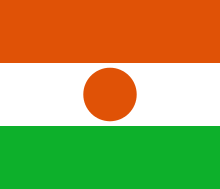 Niger
Niger Dutch Surinam
Dutch Surinam
1949
 Chile (right expanded to all elections on January 8 by Law No. 9,292)
Chile (right expanded to all elections on January 8 by Law No. 9,292).svg.png) Netherlands Antilles [49]
Netherlands Antilles [49] People's Republic of China
People's Republic of China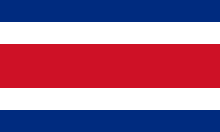 Costa Rica
Costa Rica.svg.png) Syria
Syria
1950s
1950
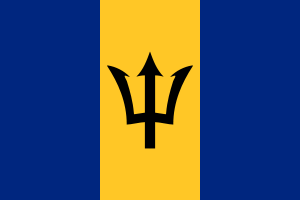 Barbados
Barbados El Salvador (all restrictions removed)[40]
El Salvador (all restrictions removed)[40] Haiti
Haiti India
India
1951
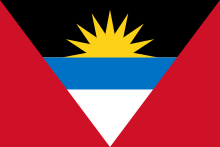 Antigua and Barbuda
Antigua and Barbuda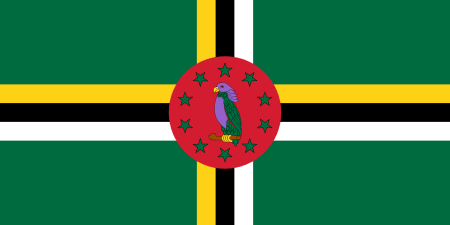 Dominica
Dominica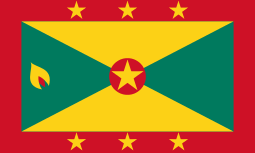 Grenada
Grenada Nepal
Nepal Saint Christopher-Nevis-Anguilla
Saint Christopher-Nevis-Anguilla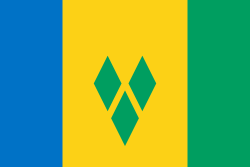 Saint Vincent and the Grenadines
Saint Vincent and the Grenadines
1952
 United Nations enacts Convention on the Political Rights of Women
United Nations enacts Convention on the Political Rights of Women Bolivia
Bolivia Côte d'Ivoire
Côte d'Ivoire Greece
Greece Lebanon (An educational requirement)
Lebanon (An educational requirement)
1953
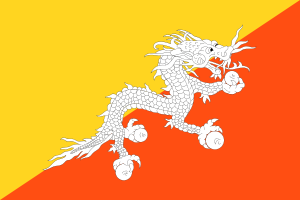 Bhutan
Bhutan.png) British Guiana
British Guiana Mexico (all women and for national elections)
Mexico (all women and for national elections)
1954
1955
1956
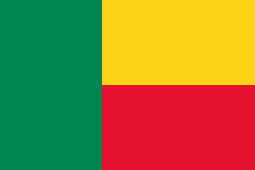 Dahomey
Dahomey.svg.png) Comoros
Comoros Egypt
Egypt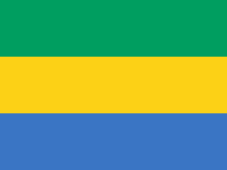 Gabon
Gabon Mali
Mali Mauritius
Mauritius Pakistan (national level; previously only literate women could vote).[50]
Pakistan (national level; previously only literate women could vote).[50].png) British Somaliland
British Somaliland
1957
 Colombia (by Constitution)[51]
Colombia (by Constitution)[51]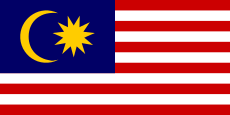 Malaya
Malaya Southern Rhodesia
Southern Rhodesia Lebanon (nationwide)
Lebanon (nationwide)
1958
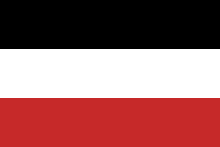 Upper Volta
Upper Volta Chad
Chad Guinea
Guinea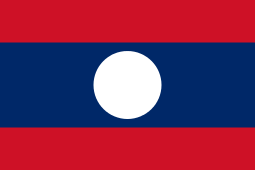 Laos
Laos Nigeria (South)
Nigeria (South)
1959
1960s
1960
1961
1962
 Algeria
Algeria Australia (universal suffrage Australian Aboriginals men and women)
Australia (universal suffrage Australian Aboriginals men and women)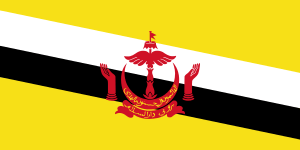 Brunei (revoked) (including men)
Brunei (revoked) (including men) Monaco
Monaco Uganda
Uganda.svg.png) Northern Rhodesia
Northern Rhodesia
1963
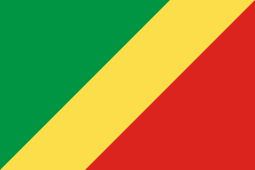 Congo
Congo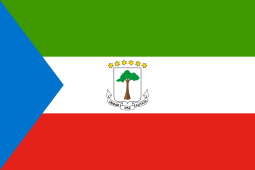 Equatorial Guinea
Equatorial Guinea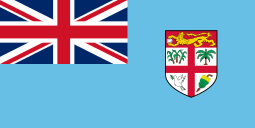 Fiji
Fiji.svg.png) Iran (after a referendum)
Iran (after a referendum) Kenya
Kenya Morocco
Morocco
1964
1965
1966
1967
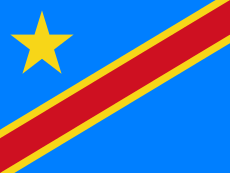 Democratic Republic of the Congo
Democratic Republic of the Congo Ecuador (women's vote made obligatory, like that of men's)[53]
Ecuador (women's vote made obligatory, like that of men's)[53]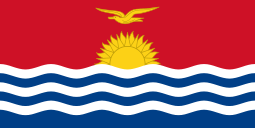 Kiribati
Kiribati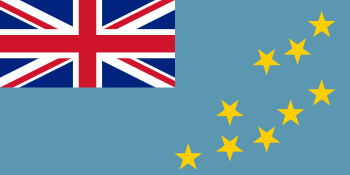 Tuvalu
Tuvalu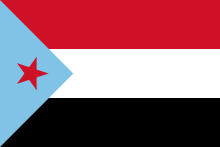 South Yemen
South Yemen
1968
 Basel-Landschaft (Swiss canton)
Basel-Landschaft (Swiss canton) Bermuda (universal)
Bermuda (universal)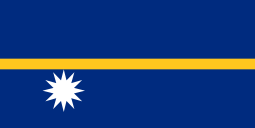 Nauru
Nauru Portugal (few electoral rights were reserved for men)
Portugal (few electoral rights were reserved for men)
1970s
1970
1971
 Switzerland (federal level)
Switzerland (federal level)
1972
 Bangladesh (suffrage granted upon its establishment)
Bangladesh (suffrage granted upon its establishment)
1973
1974
1975
1976
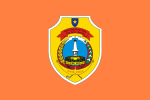 Timor Timur (Indonesia)
Timor Timur (Indonesia) Portugal (all restrictions were lifted after the Carnation Revolution)[56][57]
Portugal (all restrictions were lifted after the Carnation Revolution)[56][57]
1977
1978
1980s
1980
1984
1985
1986
1989
1990s
1990
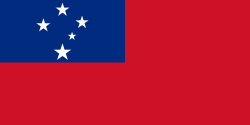 Western Samoa
Western Samoa Appenzell Innerrhoden (Swiss Canton) was forced to accept women's suffrage by the Federal Supreme Court of Switzerland
Appenzell Innerrhoden (Swiss Canton) was forced to accept women's suffrage by the Federal Supreme Court of Switzerland
1996
.svg.png) Afghanistan [52] (revoked by Taliban)
Afghanistan [52] (revoked by Taliban)
1999
21st century
2000s
2001
.svg.png) Afghanistan[52] (re-granted after the fall of Taliban)
Afghanistan[52] (re-granted after the fall of Taliban)
2003
2005
 Kuwait[61] (granted after fall of Ba'athist government of Saddam Hussein)
Kuwait[61] (granted after fall of Ba'athist government of Saddam Hussein) Iraq[62] (granted after fall of Ba'athist government of Saddam Hussein)
Iraq[62] (granted after fall of Ba'athist government of Saddam Hussein)
2006
 United Arab Emirates (UAE) (limited suffrage for both men and women).[63]
United Arab Emirates (UAE) (limited suffrage for both men and women).[63]
2010s
2015
Note: in some countries both men and women have limited suffrage. For example, in Brunei, which is a sultanate, there are no national elections, and voting exists only on local issues.[65] In the United Arab Emirates the rulers of the seven emirates each select a proportion of voters for the Federal National Council (FNC) that together account for about 12% of Emirati citizens.[63]
See also
| Wikimedia Commons has media related to Suffragettes. |
- Timeline of first women's suffrage in majority-Muslim countries
- Timeline of women's suffrage in the United States
- Timeline of women's legal rights (other than voting)
- List of the first female holders of political office in Europe
- List of suffragists and suffragettes
- List of women's rights activists
- Women's suffrage organizations
References
- ↑ 'New Zealand women and the vote', URL: http://www.nzhistory.net.nz/politics/womens-suffrage, (Ministry for Culture and Heritage), updated 17 July 2014.
- 1 2 Karlsson Sjögren, Åsa, Männen, kvinnorna och rösträtten: medborgarskap och representation 1723-1866 [Men, women and suffrage: citizenship and representation 1723-1866], Carlsson, Stockholm, 2006 (in Swedish)
- 1 2 Brief history of the Finnish Parliament
- 1 2 Centenary of women's full political rights in Finland
- ↑ Bonnie G. Smith, ed. (2008). The Oxford Encyclopedia of Women in World History. Oxford University Press. pp. 171 vol 1. ISBN 9780195148909.
- ↑ "Women dominate new Swiss cabinet". BBC News.
- ↑ "BBC NEWS - Europe - Naked Swiss hikers must cover up". bbc.co.uk.
- ↑ Photograph Tasneem Alsultan, National Geographic. "In a Historic Election, Saudi Women Cast First-Ever Ballots".
- ↑ Lucien Felli, "La renaissance du Paolisme". M. Bartoli, Pasquale Paoli, père de la patrie corse, Albatros, 1974, p. 29. "Il est un point où le caractère précurseur des institutions paolines est particulièrement accusé, c'est celui du suffrage en ce qu'il était entendu de manière très large. Il prévoyait en effet le vote des femmes qui, à l'époque, ne votaient pas en France."
- ↑ Lydia Chapin Taft Biography Womens Suffrage by Frances Stanford | Humanities 360
- ↑ "Women and the vote: Page 5 – World suffrage timeline". Nzhistory.net.nz. New Zealand History. Retrieved 12 October 2015.
- ↑ M C Mirrow, Latin American Constitutionalism: The Constitution of Cadiz and its legacy
- 1 2 3 P. Orman Ray: Woman Suffrage in Foreign Countries. The American Political Science Review. Vol. 12, No. 3 (Aug., 1918), pp. 469-474
- ↑ "Women in Parliament – Parliament of Victoria". Parliament.vic.gov.au. Retrieved 2013-05-06.
- 1 2 "Female Suffrage before 1918", The History of the Parliamentary Franchise, House of Commons Library, 1 March 2013, pp. 37–9, retrieved 16 March 2016,
by 1900 the number of women registered for the local government franchise in England was over 1 million
- 1 2 Heater, Derek (2006). Citizenship in Britain: A History. Edinburgh University Press. p. 136. ISBN 9780748626724.
- ↑ "Women's rights". The National Archives. Retrieved 11 February 2015.
- 1 2 "Which Act Gave Women the Right to Vote in Britain?". Synonym. Retrieved 11 February 2015.
- ↑ Rea, Tom. "Right Choice, Wrong Reasons: Wyoming women win the right to vote". wyohistory.org. Retrieved 26 August 2015.
- ↑ Myers, Rebecca (28 May 2013). "General History of Women's Suffrage in Britain". The Independent. Retrieved 26 August 2015.
- ↑ "Canada-WomensVote-WomenSuffrage". Faculty.marianopolis.edu. 1916-01-27. Retrieved 2013-05-06.
- ↑ United States House of Representatives (1888-04-30). "House Joint Resolution (H.J. Res.) 159, Proposing an Amendment to the Constitution to Extend the Right to Vote to Widows and Spinsters who are Property Holders". National Archives Catalog. National Archives and Records Administration. Retrieved 29 July 2016.
- ↑ "Wee, Small Republics: A Few Examples of Popular Government," Hawaiian Gazette, Nov 1, 1895, p 1
- ↑ 'New Zealand women and the vote', URL: http://www.nzhistory.net.nz/politics/womens-suffrage, (Ministry for Culture and Heritage), updated 17-Jul-2014
- 1 2 3 Women's Suffrage
- ↑ 'World suffrage timeline', URL: http://www.nzhistory.net.nz/politics/womens-suffrage/world-suffrage-timeline, (Ministry for Culture and Heritage), updated 5-Aug-2015
- ↑ Chapin, Laura (21 August 2010). "Colorado Led the Way on Women's Suffrage". usnews.com. Retrieved 26 August 2015.
- ↑ Alan Fenna; Jane Robbins; John Summers (5 September 2013). Government Politics in Australia. Pearson Higher Education AU. pp. 312–. ISBN 978-1-4860-0138-5.
- ↑ August Bebel (12 November 2014). Woman and Socialism (English Edition). Socialist Literature Company. pp. 196–. GGKEY:PAF3FSJXP21.
- ↑ Frances Maule; Annie Gertrude Webb Porritt (1917). Woman Suffrage: History, Arguments, and Results : a Collection of Six Popular Booklets Covering Practically the Entire Field of Suffrage Claims and Evidence : Designed Especially for the Convenience of Suffrage Speakers and Writers and for the Use of Debaters and Libraries. National Woman Suffrage Publishing Company.
- ↑ "Constitution of the State of Utah (Article IV Section 1)". 1896-01-04.
- ↑ Documenting a Democracy, Museum of Australian Democracy, retrieved 13 October 2011
- ↑ Bourdiol, Julien (1908), Condition internationale des Nouvelles-Hebrides, p 106
- ↑ Pipes, Richard (1997). The Formation of the Soviet Union: Communism and Nationalism, 1917-1923. Harvard University Press. p. 81. ISBN 9780674309517.
- ↑ See article 4 of the 1918 constitution of the R.S.F.S.R..
- ↑ Lewis, Jone Johnson. "International Woman Suffrage Timeline". About.com. Retrieved 2 November 2013.
- ↑ Popescu, Camelia. "Lupta pentru dreptul de vot feminin în România interbelică". Historia.ro. Adevărul Holding. Retrieved 4 January 2014.
- ↑ "This Day in World History: February 6, 1935 – Turkey Holds First Election That Allows Women to Vote". OUP Blog.
- ↑ "This Day in World History: February 6, 1935 – Turkey Holds First Election That Allows Women to Vote". OUP Blog.
- 1 2 http://pdf.usaid.gov/pdf_docs/Pnabu661.pdf
- 1 2 "Summary: Rights to Vote in Romania". Retrieved 6 October 2014.
- ↑ "CONSTITUŢIA: României din 1938". Retrieved 6 October 2014.
- ↑ "The Evolution of Bermuda's Franchise". Parliamentary Registry Bermuda.
- 1 2 http://www.idea.int/publications/wip/upload/montenegro-CS-Guatemala.pdf
- ↑ (Italian) Extension to the women of the right to vote
- ↑ "Women's Suffrage". Ipu.org. 1997-05-23. Retrieved 2013-05-06.
- ↑ Gregory Hammond, The Women's Suffrage Movement and Feminism in Argentina From Roca to Peron (U of New Mexico Press; 2011)
- ↑ The Universal Declaration of Human Rights
- ↑ http://www.everyculture.com/Ma-Ni/Netherlands-Antilles.html
- ↑ "Pakistan Ministers". Guide2womenleaders.com. Retrieved 2013-05-06.
- ↑ http://www.banrepcultural.org/blaavirtual/linea-de-tiempo/voto-mujer-frente-nacional
- 1 2 3 "Woman Suffrage Timeline International – Winning the Vote Around the World". Womenshistory.about.com. 1908-04-25. Retrieved 2013-05-06.
- ↑ "El Voto Feminino en Ecuador, published 6 April 1991, accessed 1 November 2010". Hoy.com.ec. 2011-10-14. Retrieved 2013-05-06.
- 1 2 Women's Suffrage
- ↑ Darwish, Adel (October 25, 2002). "Bahrain's women vote for first time". The Daily Telegraph. London. Retrieved May 25, 2010.
- ↑ http://www.idea.int/publications/voter_turnout_weurope/upload/chapter%204.pdf
- ↑ http://www.bbc.co.uk/radio4/womanshour/timeline/votes_to_women.shtml
- 1 2 African Women and Children. Apollo Rwormie.
- ↑ http://www.refworld.org/docid/47387b6fc.html
- ↑ https://freedomhouse.org/report/freedom-world/1999/qatar
- ↑ "Kuwait grants women right to vote". CNN. May 16, 2005. Retrieved 13 April 2014.
- ↑ "Full Text of Iraqi Constitution". Washington Post. October 12, 2005. Retrieved 17 November 2016.
- 1 2 https://www.cia.gov/library/publications/the-world-factbook/geos/ae.html
- ↑ "Women in Saudi Arabia 'to vote and run in elections'". BBC News. London. September 25, 2011. Retrieved September 25, 2011.
- ↑ https://www.cia.gov/library/publications/the-world-factbook/geos/bx.html
- http://www.hist.uu.se/historikermote05/program/Politik/52_Karlsson_Sjogren.pdf
- www.iraqinationality.gov.iq/attach/iraqi_constitution.pdf
External links
- Google Spreadsheet with map—above timeline data has been tabulated and can be viewed on a world map for any given year.
